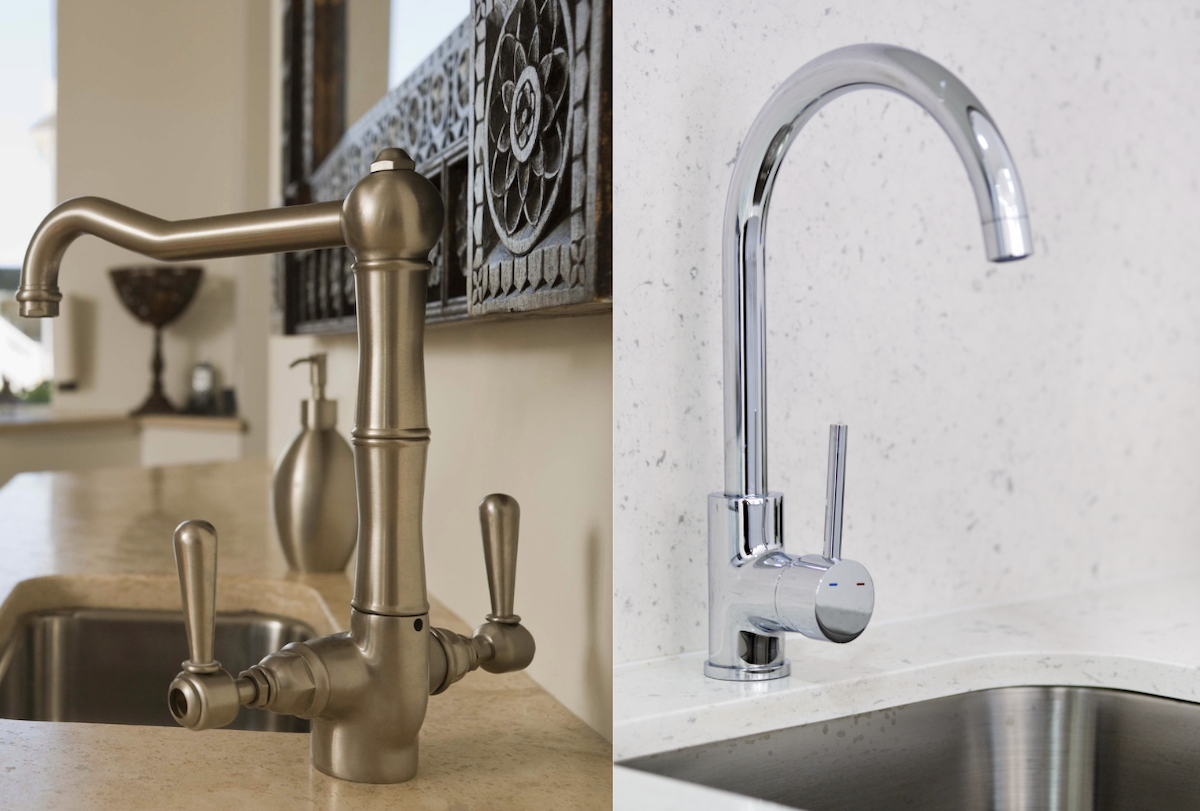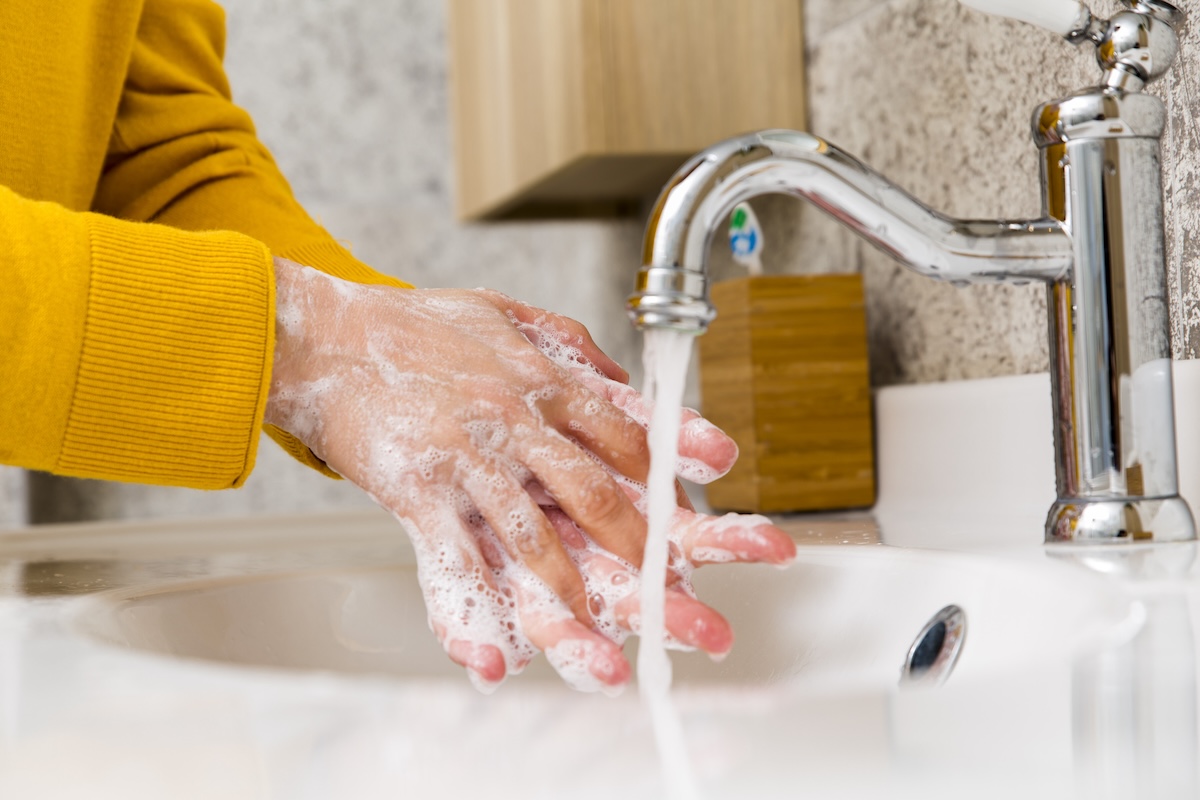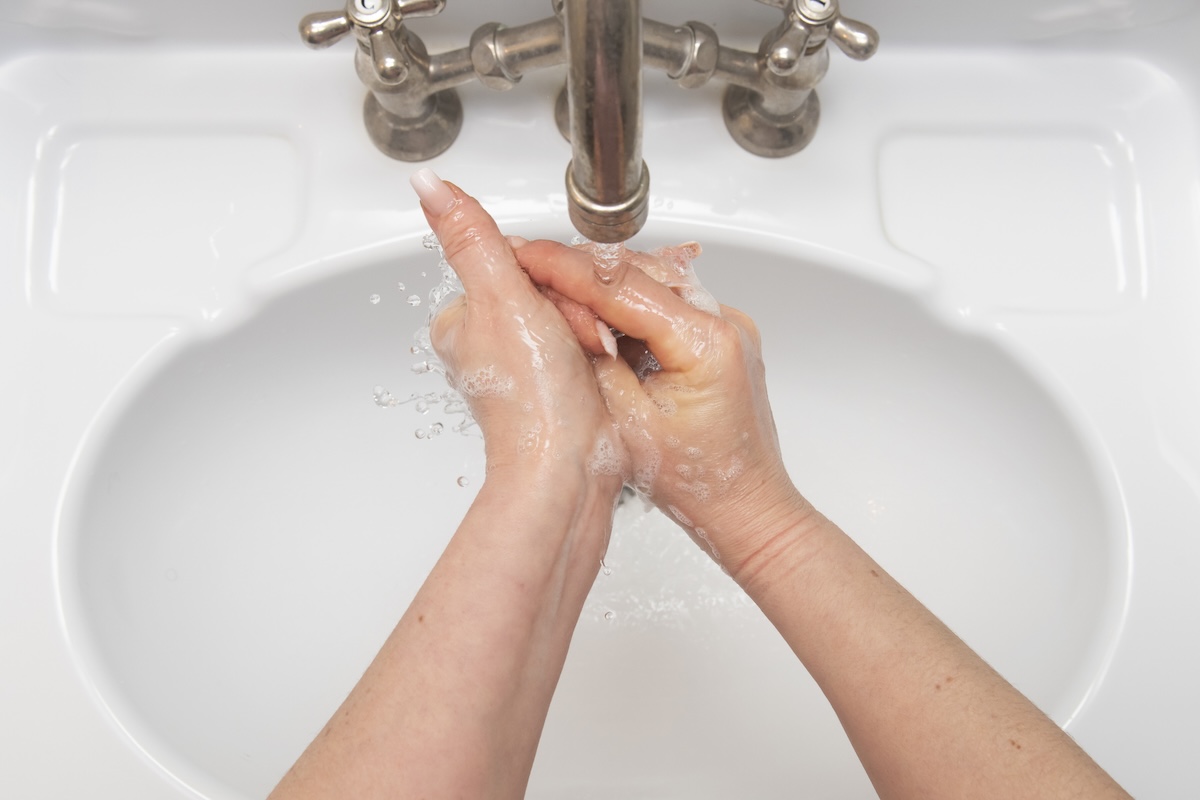

We may earn revenue from the products available on this page and participate in affiliate programs. Learn More ›
Updating hardware and fixtures, such as faucets and cabinet pulls, is a quick and relatively inexpensive way to change the look of your kitchen or bathroom. But with so many options available, choosing a finish can be challenging. Two of the most affordable, popular, and versatile finishes are chrome and brushed nickel. Classic rather than trendy, both of these metal finishes can suit a wide variety of styles from traditional to modern. They’re also neutral enough to complement other accessories like towel rings and toilet paper holders.
But these two finishes do have their differences. When deciding between chrome and brushed nickel, it’s important to consider factors like aesthetics, durability, and maintenance. Read on to see the two finishes—chrome vs. brushed nickel—go head-to-head. Once you understand the pros and cons of each, it should be a breeze to select the best finishing touch for your new kitchen faucet, bathroom faucet, cabinet hardware, or bath accessories.
Faucet Finish Basics
The typical kitchen or bathroom faucet is cast from brass, then cleaned and polished, and plated with a few very thin layers of metal through processes like electroplating or physical vapor deposition (PVD). The faucet is usually first coated with nickel, and then layered with other coatings, depending on the final finish desired.
What is a polished chrome finish?

For a polished chrome faucet, chrome is the last metal finish that’s applied, and the faucet is then highly polished. Polished chrome faucets are:
- Durable
- Resistant to corrosion
- Easy to clean
- Affordable
- Sleek and shiny
What is a brushed nickel finish?

A brushed finish, applied before or after the final metal coating, gives a nickel faucet a soft, matte appearance. Brushed nickel faucets are:
- Durable
- Resistant to corrosion
- Resistant to fingerprints and water spots
- Warm-toned
- Suited to a variety of interiors
Key Differences Between Brushed Nickel and Polished Chrome
Appearance
The most obvious difference between brushed nickel and chrome is that polished chrome is shiny and bright, while brushed nickel has a slightly matte appearance, thanks to the applied texture. It’s important to note that the look of a brushed nickel finish can vary from manufacturer to manufacturer, depending on the plating process, the thickness of the metal coating, and other factors. Some brushed finishes may have a slightly yellow cast, so it’s worth taking the time to shop for fixtures in person so you can compare different manufacturers’ finishes. There is also a range of matte metallic finishes worth considering. For instance, some manufacturers offer a satin nickel finish, which is smoother and a bit glossier than the more textured brushed finish.
Cost
Chrome has long been known as the most affordable finish, even though it often pops up in high-end projects. While the price difference isn’t huge, expect to pay a little more for a brushed nickel finish than a polished chrome finish. However, both options are generally less expensive than other finishes, such as polished brass and oil-rubbed bronze.
Suitability for different design schemes
Chrome plating gives metal a slightly blue tint, which can look especially good in a cool color scheme of soothing and refreshing blues, greens, and light purples. In contrast, the textured quality of brushed nickel gives the finish a soft yellow or white shine. This creates a cozier feel that complements warmer interiors featuring oranges, reds, or yellows. In general, if your space is bright and modern, cooler chrome might be a better bet. For a warmer, more traditional vibe, brushed nickel could be the winner. Note that if you’re trying to match the look of stainless steel to complement an existing kitchen sink or appliances, brushed nickel is probably the better option.
Durability
Chrome and brushed nickel are both durable, corrosion-resistant finishes, but each is susceptible to wear and tear. Factors that affect the longevity of a faucet’s finish include its quality, the manufacturing process, the frequency of use, and the methods used for cleaning and care.
Over time and with heavy use, brushed nickel can develop a milky white tarnish, particularly in humid bathrooms. Cleaning with a soft cloth and a solution of white vinegar and water or another mild cleaner will help remove tarnish. Polishing brushed nicked fixtures with a metal polish or paste wax may help remove heavier tarnish, but check the manufacturer’s care guidelines before selecting products.
Chrome can be susceptible to damage if the finish was poorly applied or if it gets scratched from improper cleaning. (See more about maintaining chrome below.) Once chrome is cracked or damaged, it loses its protective abilities, and the layers below become susceptible to rust and corrosion. For light damage, you may be able to clean rust from the chrome finish of a bath or kitchen faucet.
Resistance to stains and fingerprints
Fingerprints are the bane of fixtures and faucets in the kitchen and bathroom, and are also prone to water spots, those unsightly mineral deposits left on the finish when water evaporates. While a brushed finish hides these spots, smudges, and splotches quite well, bright and shiny chrome highlights everyday blemishes, requiring more persistence to keep the surface gleaming. To keep chrome looking its best, it’s a good idea to blot the faucet dry after each use rather than leaving water drops to evaporate, leading to spotting. For another option, try rubbing a piece of waxed paper over chrome fixtures. The unnoticeable wax residue will prevent water spots and fingerprints from showing.
Maintenance
Polished chrome is more likely to show scratches, fingerprints, and water spots, so this finish requires a bit more upkeep than its matte competitor. For chrome faucets, avoid abrasive cleansers, ammonia-based products, bleach, acids, and harsh scrubbers like steel wool. Opt instead for mild dish soap and water or a 1:1 ratio of white vinegar and water. Apply with a soft cotton cloth or nonabrasive sponge; for hard-to-reach crevices, an old soft toothbrush can come in handy. Then rinse and dry. The occasional use of a chrome polish will kick the shine up a notch, but make sure to follow the manufacturer’s directions.
Brushed nickel tends to keep its appearance up longer and with less effort than chrome. The matte finish helps hide fingerprints and small scratches, and many manufacturers use a lacquer coating to protect the finish from wear and discoloration. Most wear comes from incorrect cleaning over time, so knowing how to clean brushed nickel is key to the finish’s longevity. As with chrome, avoid abrasive scrubbing pads and harsh cleansers as well as products that contain ammonia, bleach, or acid, and clean off water spots with a 50/50 solution of water and white vinegar. Always rinse and dry after cleaning, and be sure to follow the manufacturer’s guidelines for care.
Should You Choose Brushed Nickel or Chrome?

Either chrome or brushed nickel offers a durable and attractive finish for your kitchen and bathroom faucets, hardware, and accessories. So, when it’s time to replace the kitchen faucet, how do you decide between polished chrome vs brushed nickel?
The choice comes down to aesthetics, preferences, and lifestyle. First, consider other finishes in the room. If you’re installing a new faucet in a kitchen with stainless steel appliances or sink, or brushed metal knobs and pulls, a brushed nickel faucet is probably the way to go. But also consider interior design: For a more traditional interior, brushed nickel may be more suitable, while for a sleek, modern space, chrome is probably the better choice.
But appearance isn’t everything. If having to contend with spots and the occasional scratch will annoy you, or if you’re a lax cleaner in general, decide whether you’re up for the slightly more demanding care and maintenance of a shiny chrome fixture. Whichever finish you choose, brushed nickel or chrome, you want to end up with a fixture that will last, look good, and complement both the space and the way you live in it.
